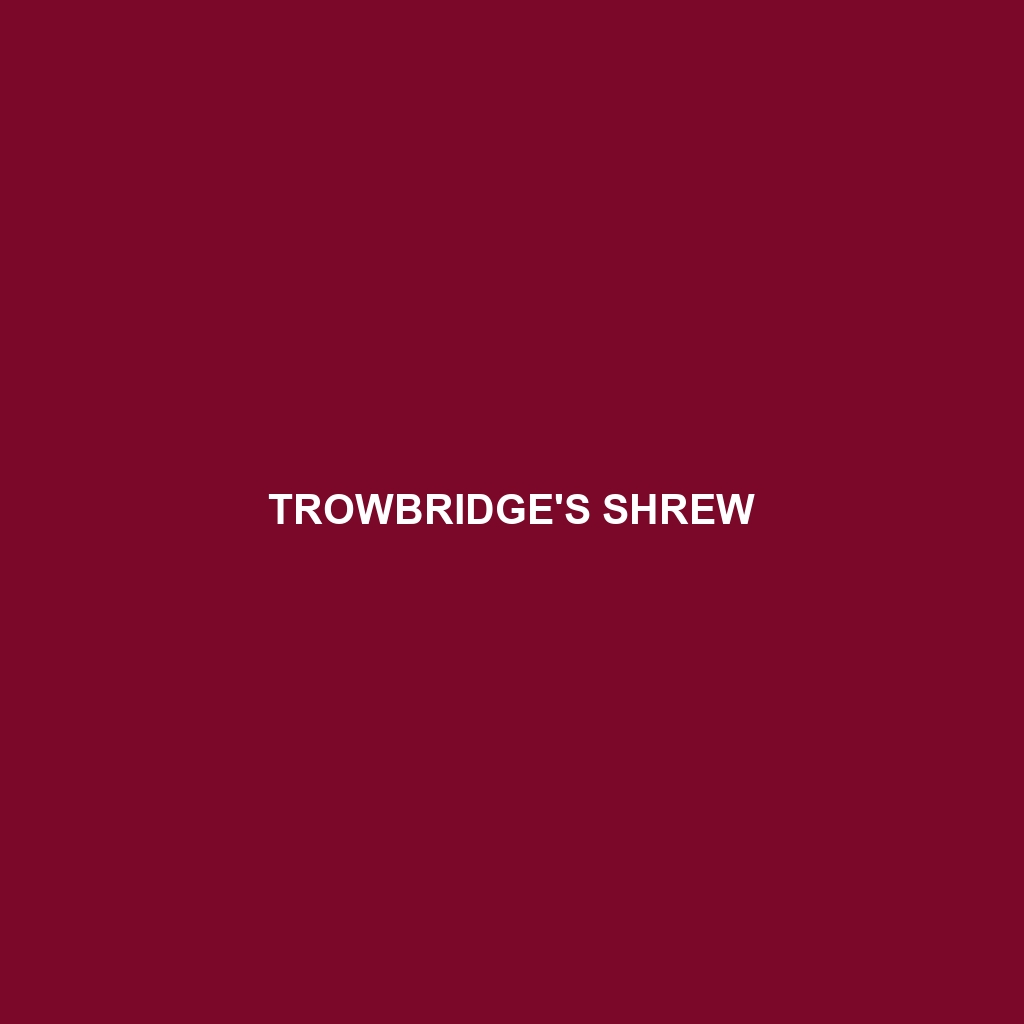Trowbridge’s Shrew: An In-Depth Species Description
Common Name: Trowbridge’s Shrew
Scientific Name: Sorex trowbridgii
Habitat
Habitat: Trowbridge’s Shrew is primarily found in the moist and densely vegetated regions of the western United States and southwestern Canada. This species tends to inhabit forested areas, wet meadows, and riparian zones, where abundant leaf litter and undergrowth provide ample shelter and foraging opportunities. Their preferred environments include humid temperate forests and areas near water bodies, which are crucial for their survival.
Physical Characteristics
Physical Characteristics: Trowbridge’s Shrew is a small mammal, typically measuring around 3.5 to 4.5 inches in body length, with an additional tail length of 2.5 to 4 inches. The shrew’s fur is usually a dark brown or grayish color on the dorsal side and a lighter, grayish-white on the ventral side. Its elongated snout and small, beady eyes give it a distinctive appearance. Trowbridge’s Shrew also possesses sharp teeth adapted for a diet focused on invertebrates, making it notable among small mammals.
Behavior
Behavior: This species is generally solitary and mostly nocturnal, becoming active at dusk and during the night. Trowbridge’s Shrew exhibits a high level of agility, scurrying through foliage in search of prey. They have a keen sense of smell, which they use to find food in their damp environments. Additionally, Trowbridge’s Shrew is known to create tunnel systems under leaf litter, which provide both transportation routes and protection from predators.
Diet
Diet: The diet of Trowbridge’s Shrew primarily consists of insects, including beetles, ants, and various other invertebrates. They also consume earthworms and small amphibians, making them crucial predators of pest species. The shrew’s foraging behavior is characterized by its quick movements and constant hunting during its active hours, emphasizing their role in controlling insect populations.
Reproduction
Reproduction: Trowbridge’s Shrew typically breeds from late spring to early summer. A female can give birth to a litter of 4 to 7 young after a gestation period of about 21 to 24 days. The young are born blind and hairless, relying on their mother for nourishment and protection. They reach maturity quickly, often within a few months, allowing for multiple breeding cycles each year, which contributes to the species’ population dynamics.
Conservation Status
Conservation Status: As of the latest assessments, Trowbridge’s Shrew is classified as a species of least concern, but it faces potential threats from habitat loss and climate change. Conservation efforts focus on preserving wetland areas and forest habitats that are crucial for their survival, underscoring the importance of biodiversity in these ecosystems.
Interesting Facts
Interesting Facts: Trowbridge’s Shrew is known for its high metabolic rate, requiring it to consume food equivalent to more than its body weight daily to sustain its energy levels. Additionally, this species has a unique means of communication via ultrasonic vocalizations, particularly during mating seasons.
Role in Ecosystem
Role in Ecosystem: Trowbridge’s Shrew plays an essential role in its ecosystem by helping to control insect and pest populations. Their predation contributes to the balance of the food web, affecting both the population dynamics of their prey and the species that prey upon them. Moreover, their presence indicates a healthy and functioning wetland or forest ecosystem.
